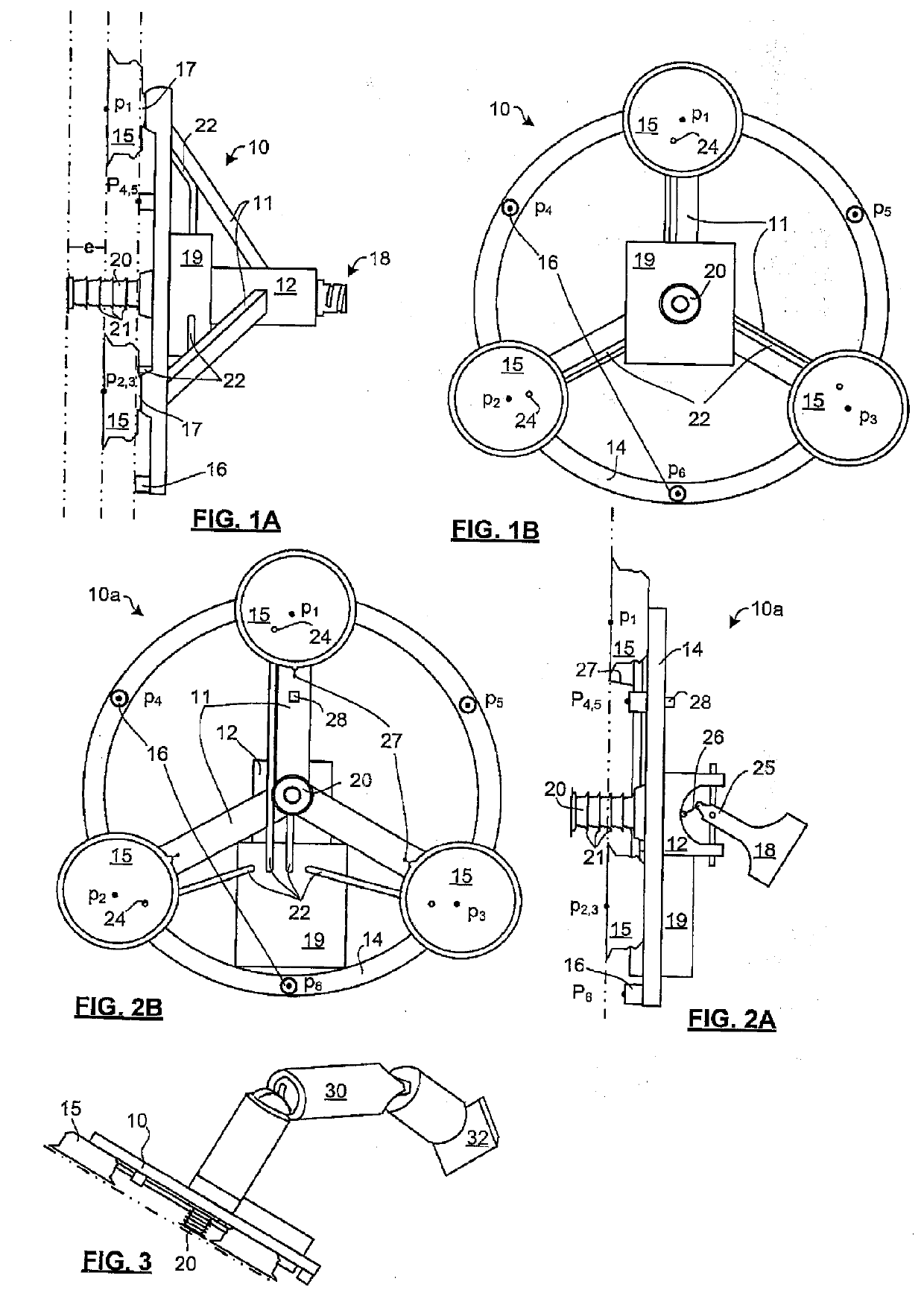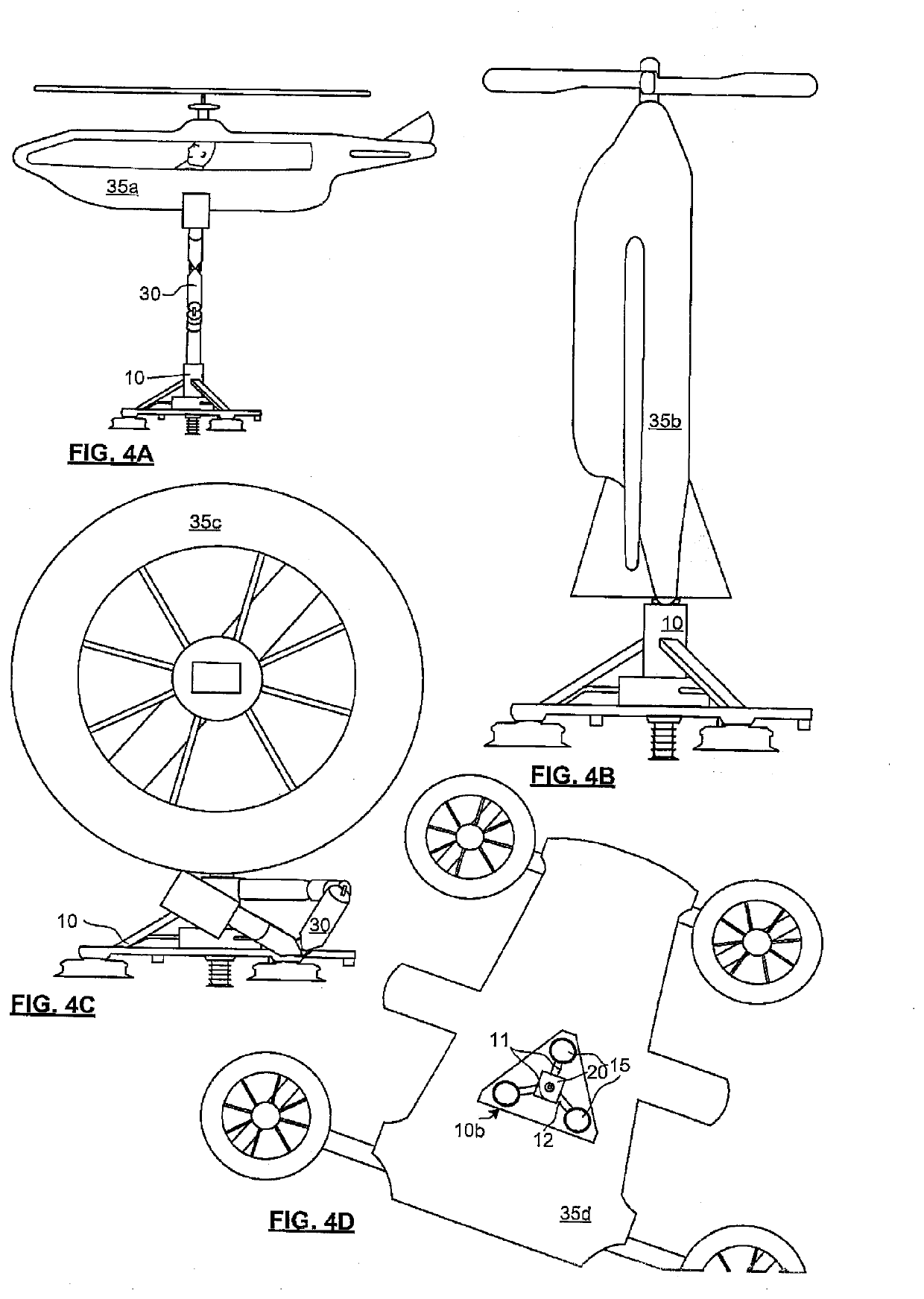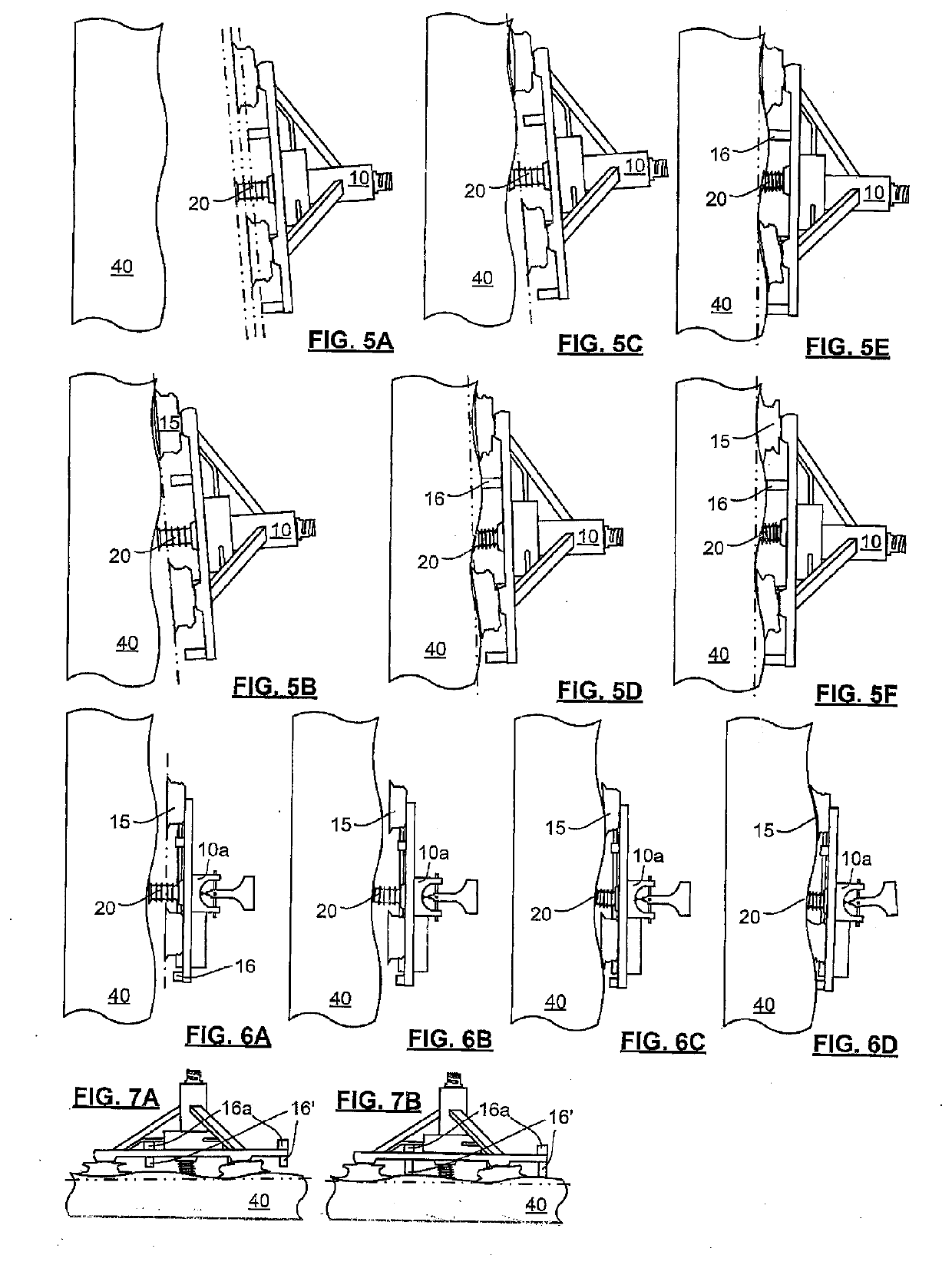Base attachment module for small aerial vehicles
a technology for aerial vehicles and base attachments, which is applied in the direction of mechanical equipment, transportation and packaging, and rearrester hooks, etc., can solve the problems of limited attachment means for savs with enough payload to perform useful robotic operations, difficult to control drones sufficiently to make contact with the 5th suction cup, and difficult to attach, etc., to achieve more reliable attachment of base attachment modules, increase the chance of csc attachment, and suitable surface roughness
- Summary
- Abstract
- Description
- Claims
- Application Information
AI Technical Summary
Benefits of technology
Problems solved by technology
Method used
Image
Examples
examples
[0087]Applicant has demonstrated the present invention with prototypes designed and built in house. Two versions have been built using 3D printed structures and assembled to form wye frames, with a BTCSC at a hub of the frame and cups at the ends.
[0088]FIG. 11A is a photograph of a first generation of the BAM prototype adhered to a vertical wall, and showing a suspended 200 lb weight. The prototype (1g-BAM) was designed with a two-piece hub structure, three radial arms extending from the hub generally in a plane. Each piece was formed with a 3D printer, and bolted together. A hollow aluminum rod, at a flared end thereof, was bolted to a centre of the BAM, oriented perpendicular to the plane. Two of the 3 contact points were separated by 430 mm, and the third separation was 365 mm, and thus a mean separation was about 408 mm. The mean separation is about 10 times a tip diameter of the CSC, and it preferably at least 3 time the tip diameter. The centre of the CSC is 240 mm from each c...
PUM
 Login to View More
Login to View More Abstract
Description
Claims
Application Information
 Login to View More
Login to View More - R&D
- Intellectual Property
- Life Sciences
- Materials
- Tech Scout
- Unparalleled Data Quality
- Higher Quality Content
- 60% Fewer Hallucinations
Browse by: Latest US Patents, China's latest patents, Technical Efficacy Thesaurus, Application Domain, Technology Topic, Popular Technical Reports.
© 2025 PatSnap. All rights reserved.Legal|Privacy policy|Modern Slavery Act Transparency Statement|Sitemap|About US| Contact US: help@patsnap.com



